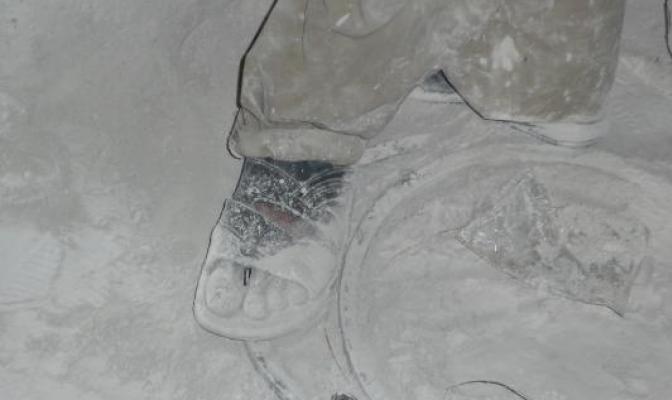Dust to Dust: a World History of Silicosis

 Gemstone worker’s foot, covered in silica dust
Gemstone worker’s foot, covered in silica dust
The history of occupational diseases is a rapidly growing field, which combines renewed interest in the history of “biopolitics”, political economy, and social movements. While some excellent books on the subject exist, they tend to have either a strictly national focus, or else treat the issue through collective books which are a range of thematic or national monographs. There is a need for a truly transnational, integrated history covering the main aspects of the world history of silicosis.
Dust to Dust: a World History of Silicosis, directed by Paul-André Rosental, will fill this important gap in the historiography. Focusing on the history of silicosis since the 19th century, it is the outcome of an experiment in the collective writing of world history. It has brought together an incredible team of social, economic and public health historians, and two physicians. They are specialists in eleven countries located on five continents (Australia, Belgium, France, Germany, Italy, Japan, Socialist Czechoslovakia, South Africa, Switzerland, the United Kingdom and the United States).
The manuscript has been accepted by the Johns Hopkins University Press and will soon be published - we will keep you updated!
Unique features
- Methodology. An original method of writing world history, through a collective but fully integrated and consistent approach that transcends national particularities and styles in writing history.
- Combination of transnational and comparative history. It analyzes the circulation of knowledge, techniques and political projects linked to the workforce’s exposure to dust hazards. It also examines the way in which various systems of political economy (the free market, nationalized industries, planned economy, colonial sectors) reacted to the same constraints, medical monitoring, financial compensation and prevention.
- Global coverage of an occupational disease. While the mix of actors involved in this type of story (states, employers, unions, social and private insurances, experts, public opinion) has already been described, their integration within the international sphere, and the crucial (and conflicting) role of international organizations, has been little explored.
- Pluridisciplinary scope. Dust to Dust is a history book which will pave new avenues of research in the field of medicine.
- In-depth archival knowledge. A frequent criticism of world history’s large syntheses is that they oblige their authors to rely largely on secondary literature. Dust to Dust brings together historians and physicians who have first-hand knowledge of the archival material.
Contributing authors
- Alberto Baldasseroni, occupational physician and epidemiologist with the CeRIMP, (Regional Centre for study of work injuries and occupational diseases of the Tuscany Region, Florence) and Professor with the School of Specialization in Public Health and Hygiene at the University of Florence.
- Francesco Carnevale, occupational physician with the Azienda Sanitaria di Firenze and Professor with the School of Specialization in Occupational Medicine at the University of Florence.
- Gerald Markowitz, Distinguished Professor of History at John Jay College of Criminal Justice and the Graduate Center, City University of New York.
- Jock McCulloch, Professor at the School of Global Studies at the RMIT University in Melbourne Australia.
- Eric Geerkens, Ph.D. in History, lecturer in economic and social history at the University of Liège.
- Martin Lengwiler, Professor for Modern History in the Department of History, University of Basel, Switzerland.
- Joseph Melling, Professor of History at the University of Exeter, where he where he co-directs the Centre for Medical History.
- Julia Moses, Ph.D, Lecturer in Modern History at the University of Sheffield.
- Paul-André Rosental, Professor of Contemporary History at Sciences Po and associate researcher at the Institut National d’Etudes Démographiques (INED), Director of the Silicosis project.
- David Rosner, Ronald H. Lauterstein Professor of Sociomedical Sciences History at Columbia University and Co-Director of the Center for the History of Public Health at Columbia’s Mailman School of Public Health.
- Bernard Thomann, Lecturer in History at the National Institute of Oriental Languages and Civilizations, Paris
Photo credit: Gemstone worker’s foot, covered in silica dust © Institute for Global Labour and Human Rights via Flickr Creative Commons. 20 February 2009, Khambat, Gujarat, India. Licence.









